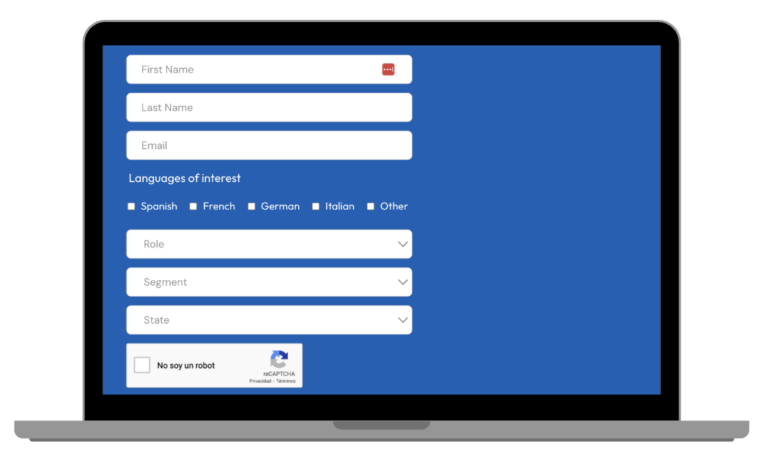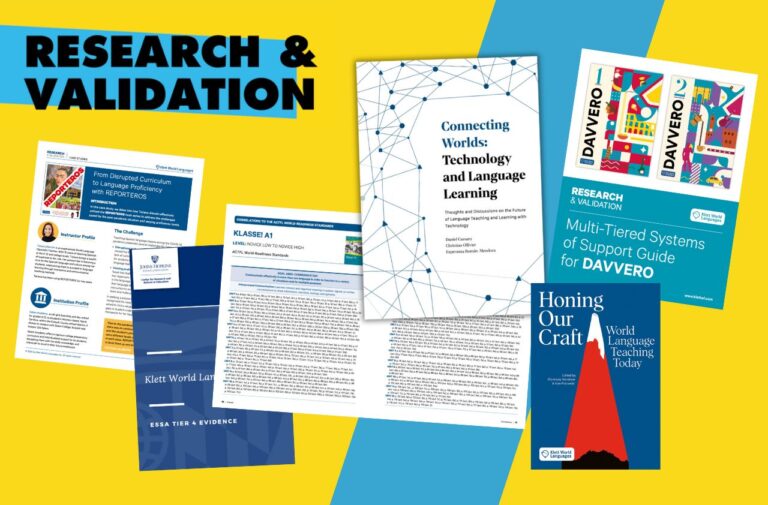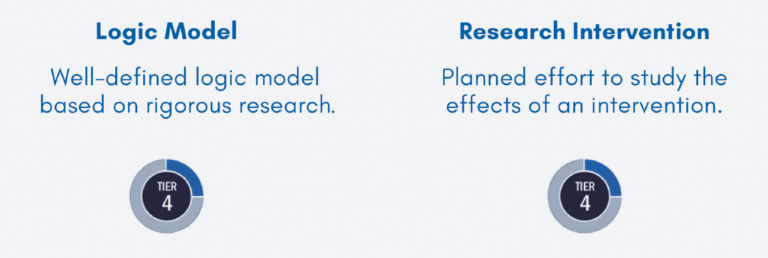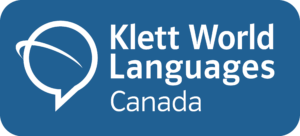Home / Our Pedagogical Approach
Our Pedagogical Approach
At Klett World Languages, our mission is to empower students to communicate authentically in world languages. Our approach is rooted in proven methodologies and best practices that ensure meaningful language acquisition, backed by extensive research.
Research-Driven Language Programs
Our materials are designed based on comprehensive research, including a review by Johns Hopkins University. For detailed insights into the studies and methodologies that inform our programs, explore our Research & Validation section.
To gain a deeper understanding of our commitment to effective teaching practices, we recommend reading Honing Our Craft: World Language Teaching Today, co-edited by Florencia Henshaw and Kim Potowski.
Key Elements of Our Approach
- Proficiency-Based Framework
Our programs align with ACTFL’s World Readiness Standards, proficiency benchmarks, and guiding principles to promote authentic communication and real-life language use.
- Communicative Language Teaching (CLT)
We focus on meaningful interaction from day one, encouraging students to engage in real-world tasks and communicate beyond basic proficiency.
- Project-Based Learning (PBL)
Our programs feature extended projects driven by essential questions, promoting critical thinking, collaboration, and personalized learning experiences.
- Comprehensible Input and Output
We ensure that students receive language input they can understand and produce meaningful, contextually appropriate language output through scaffolded activities.
- Cultural Integration
Each lesson integrates intercultural communication, utilizing authentic resources to expose students to real-world language use and diverse cultural perspectives.
- Differentiated Instruction
Our materials include a variety of tools and formative assessments to tailor learning experiences to individual needs, with specific support for heritage learners and diverse student populations.
Instructional Alignment & Support Library
Resources that show how our materials align with ACTFL, MTSS, and state standards — designed to support effective planning and instruction.
Independent Validation Spotlight
Our REPORTEROS, REPORTERS FRANCOPHONES and DAS REPORTERTEAM programs meets ESSA Tier 4 criteria, validated by a rigorous research analysis conducted by the Johns Hopkins University School of Education and based on a thorough review of our instructional materials. We proudly offer a program built on a well-defined logic model that ensures quality and effectiveness in language education. Read the complete report by clicking the button below!
Stay Updated on New Research
Stay updated on the latest research in language education. Sign up to receive new case studies, white papers, and expert insights to support your teaching and student success.



